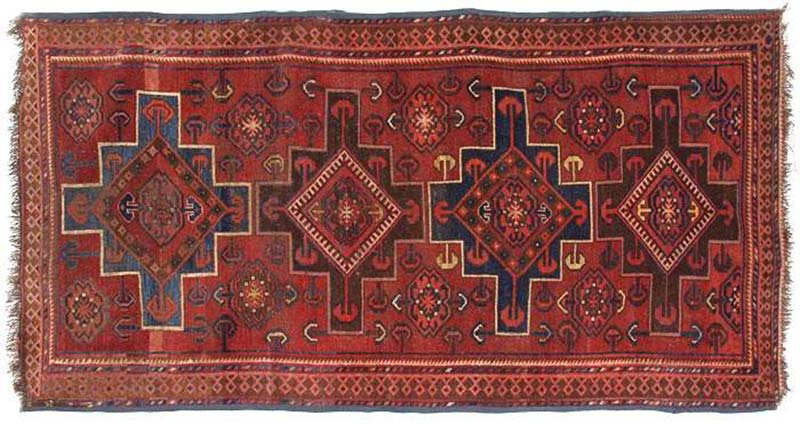Central Asia is full of mysteries and wonders. Middle Asia, as it is sometimes called, is rich in stunning landscapes, culture and history and it has many a thing to be proud of. Thanks to its close connection with the Silk Road, ancient trading vessel which led from China through India to Europe, Central Asia acted as a crossroads for the movement of people, goods, and ideas between Europe, Western Asia, South Asia, and East Asia.
It was known as one of the most wonderful and dangerous parts of this road. Its peoples were able to develop weaving techniques unseen anywhere else. Their marvelous designs and luscious colors mix numerous traditions and approaches, while staying original and unique. In part two of the article on the wonders of Central Asian carpets we will concentrate on those woven in Uzbekistan, Tajikistan and Kazakhstan.
Similarly to the Turkmen and Afgan, Uzbeks also have deep respect for the art of weaving, as it is an irreplaceable part of their culture. Out of all carpet-making villages, the best known are Kamashi, Hadzhaki and Jeynov in Kashkadarya region, where the craft flourishes even these days. Uzbek carpets were usually woven by women living in the rural areas of the country or by tribes which carried portable looms everywhere they went. Ever since Joseph Stalin started collectivization in the 1930s, the nomadic tribes diminished. However, the tradition lives on. The Lakai tribe, one of the last nomads in the area, still travels around Uzbekistan, producing stunning carpets, usually killims or flat weaves.
The role of rugs in the tribe’s life was a very practical one – as they lived in yurts, portable, round tents covered with skins or felt, they often used rugs as covers for the entrance or a substitute for floor. The nomads living in Kyrgyzstan were very original in their approach to felt, which they have been using for over two and a half thousand years, as they use it not only to make tents, but also carpets. Kyrgyz picturesque rugs, known as shyrdak, are usually made of two sheets of felt, dyed, cut into identical pieces and put back together into a mosaic-like textile of complex patterns with the border often covered by fine braid work. Those rugs have a long history and are still produced and used in both homes and yurts. Every single rug is made by hand, using the fleeces of 4 or 5 sheep. The process itself is complex and time-consuming, usually taking up to whole winter.

Among many fine rugs woven in Tajikistan, arguably the best known are those made in Kayrokum. Carpets and similar goods made there use modern patterns and color combinations while keeping traditional techniques, making them a desirable commodity worldwide. Another decorative textile made in Tajikistan is Suzani, an embroidered and decorative piece. The name was derived from Persian word ‘suzan’, meaning needle. Usually made of cotton or silk, Suzanis are embroidered with silk or cotton thread. Very often the textiles are made in two or more pieces stitched together. Their most popular motifs are sun, moon and flowers, occasionally also animals.
The rugs from Kazakhstan are easily distinguishable among other Middle Asian carpets thanks to their iconic design and motifs which include Memling guls, simplified figures of the people and animals and spectacular medallions. Carpets are a very important piece of Kazak culture and their connection with the past. Classified as Oriental, Kazak rugs are characterized by luscious colors and – most importantly – the meaningful symbols incorporated into the design. Numerous collectors, aficionados and connoisseurs find those motifs to be the most fascinating part of Kazak weaving craft, which itself is a very interesting subject. Despite the fact that all over patterns often appear on the rugs’ surfaces, what Kazak carpets are best known for are their grand and elaborate medallions, especially those of either Secan or Karachopf types. If maintained correctly, paying extra attention to their knots and thick, luxurious pile, Kazak rugs show their true colors through the impeccable quality of wool and beautiful hues. Antique pieces are even more desirable, as they show the magnificence of the old weaving techniques, stunning with their luscious palette, as vivid as it was decades ago. No wonder that they are among one of the most sough-after pieces from Central Asia, as they delight with bold tribal patterns which creatively utilize geometric shapes in order to create marvelous compositions.
While they are still not as popular as other kinds of Oriental rugs, Middle Asian carpets have much to be proud of – their beauty, quality and place in culture amaze people from all over the world.